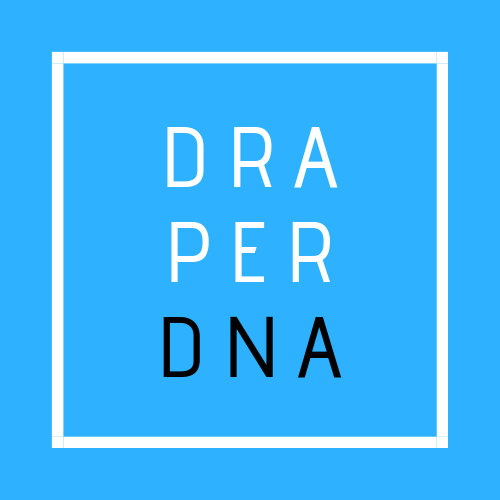There is a Difference featuring Shawn Draper
April 6, 2021
When you are set aside by yourself day after day as we have in 2020, you become deeply reflective of all that is around you. The year 2020 was nine months of reflection on our business, our industry, and our clients. We quickly recognized there is a difference.
At the end of each year and the beginning of the next, we take a critical look at what is working and what is not for our business and our clients. We survey the markets we serve and how the people participate in them. We look outside of these markets and people to seek new ideas and opportunities for our clients and our business. We are looking for inspiration. We also seek the truth about ourselves and others. One of the more important insights we gain is what is the difference between our agency and all the others?
Point of View
For the majority of my career, I worked as a marketing leader with a building products manufacturer (BPM). I have been blessed to work with incredible agencies, large, mid-size, and small. I have led agency reviews that included big names and boutique businesses. This is to say I have seen and experienced a variety of what the industry has to offer from the chair of the client.
I have been seated in the agency chair, as well, as a partner in an agency that grew from a small boutique (a team of 24) to a mid-sized firm of 100+ people with offices on both coasts. I have worked with an agency collective for several clients that has allowed me to work side by side with many more agencies of all sizes.
With all of these experiences, it is apparent there is a difference between agencies that is far greater than size. Let me show you.
The Traditional Start

The first three agencies I worked with in building products were creative houses, first and foremost – Campbell Mithun Esty, Hoffman York, and Colle McVoy. Each agency provided “full services” like public relations, research, media planning and buying, and digital marketing. But their foundation was creative. All you had to do was look at the top of the leadership ladder. The agencies were founded and lead by creatives. All three agencies were very good – award winning – and traditional.
The Cross-over

I “crossed over” to the agency side of the business with a public relations centric firm, IMRE, and became one of the three partners. One of the goals was to diversify the services the agency was providing to become an integrated agency. As much as we professed integration, hired talented creative, digital, research, and social media people, the agency thought and operated from its foundation as a PR firm. The account teams were PR practitioners. The business leaders were PR practitioners. Most importantly, the founder and CEO and President were PR practitioners. All facets of the business operation were PR based. This integrated agency thinks and acts, consciously and subconsciously, as a PR firm.
The same is true for full-service agencies that begin as a digital agency or social media agency. The foundation of their work starts and typically ends from their founders and leader original point of view.
The Media Company Theory

I had been debating the convergence of media companies and their ever-expanding list of services with agencies for a decade with my good friend and publisher, Dean Horowitz. I was convinced the two businesses were on a collision course to being direct competition, when Tony Mancini, a friend and publisher, asked me to partner with him to build their social media capabilities. This was my chance to put the theory I had been debating to the test.
Several large publishing houses have acquired traditional agencies to bolster their marketing services. My experience was as an independent business partner. I learned a lot about how media companies, publishers, develop and go market with their products. Outside of the traditional print properties, media companies build and sell programs. As much as they claim to provide marketing strategy, they offer programs. These programs focus on advertising (aka sponsorships). When they sell conferences, customers buy a sponsorship. The same is true for newsletters, white papers, case studies, email campaigns, videos, and events. Customers are buying the opportunity to place their names on the media companies’ properties. These programs are priced like the print advertising they sell (think big margins) and sold in the same way. Media companies create and sell tactics packaged as programs. Agencies create and sell custom properties unique to each client. As a result of this four-year experience, I still believe media companies and agencies are on a course of convergence. I just believe it is the agencies that will challenge the media companies.
Simplified
As I was preparing to write this post, I outlined this list of differences in the leading points of view of the agencies I have work with as a client and a competitor. Here is my list –
- PR – newsworthiness
- Creative – design
- Social media – trends
- Digital – technology, data
- Media company – programs
- Strategic – business development, demand generation
You often see these points of view on the website and social media bios where agencies describe themselves. For example –

Draper DNA

What is a strategic agency? My friend and agency new business guru, Robb High, tells me all agencies are to be strategic. I believe all agencies claim to be strategic but in the context of business development and demand generation, there is a difference.
Draper DNA is a built the fundamentals of business development and demand generation. My marketing career formally began at Andersen Windows where marketing was focused on product, pricing, place (distribution), promotions, and personal selling. The 5 P’s. Everything began with knowing the customers through the job sites visits, trade tours of the plant, industry meetings, and, most importantly, working directly with the sales team. Marketing efforts began with the customer and concluded with the brand. Andersen could afford this privilege with the strength of the brand. Little was directed solely at building the brand. The brand maintained its strength through its customers. This business development approach and focus on creating demand translates directly to how Draper DNA was built and is operated. Another example of an agency that reflects the experiences of its founder and leader.
You and Your Customers
There is a tremendous advantage to having a close relationship with your client’s customers. The advantage compounds when you share the similar experiences with your clients; specifically, knowing the expectations they must meet. Having this knowledge and experience is a leading reason why Draper DNA is often asked to help our clients overcome a challenge their current agency and team cannot. These challenges have ranged from recreating a brand to making social media a leading communication and sales tool. Addressing these big challenges suits us perfectly as it reflects the personality and experience of the team.
Our Team
The difference between agencies is often the team of people working together. Having recognized this while sitting on both sides of the agency client relationship, Draper DNA has taken a different approach to putting our team together. First, every member of our team is a well-recognized expert in their area of specialty. This is defined by skills demonstrated over time. Second, our team members must be practicing entrepreneurs. Knowing and living a life similar to most of our client’s customers gives us a big advantage. Our work translates directly to the dinner table for both our client’s and our team. Finally, you must love to challenge conventional thinking and do it practically to be a part of the team.

Finally
There is a difference between agencies. You may have to look closely. When you know what you are looking for it is easier to see. It is important. Most agencies work from a singular strength. Some possess a couple of related strengths. Few can undertake it all. Even fewer have been built from day one to deliver experienced expertise for each challenge you may encounter.
There is a difference. Let us show you.
Watch the full interview of Shawn on our YouTube channel at @DraperDNA.





